Japanese Food History and Culture
Amazake: Interview at a Koji Specialty Shop
About MURO
Ōmura Tomonori: Pleased to meet you too! My name is Ōmura Tomonori, CEO of the CORAZON company. CORAZON owns two stores in Kagurazaka: NOREN and MURO. We feel that business in the 21st century should strive to enrich hearts, hence us using the Spanish word for heart.
Regarding the stores, at NOREN, we gather items hand crafted by passionate, small scale productions and distribute them across the country. Likewise, at MURO we were offering articles such as miso, shōyu, sake, although we now focus on amazake. The products at NOREN and MURO might be different, but the core concept of working with local, traditional producers stays the same.
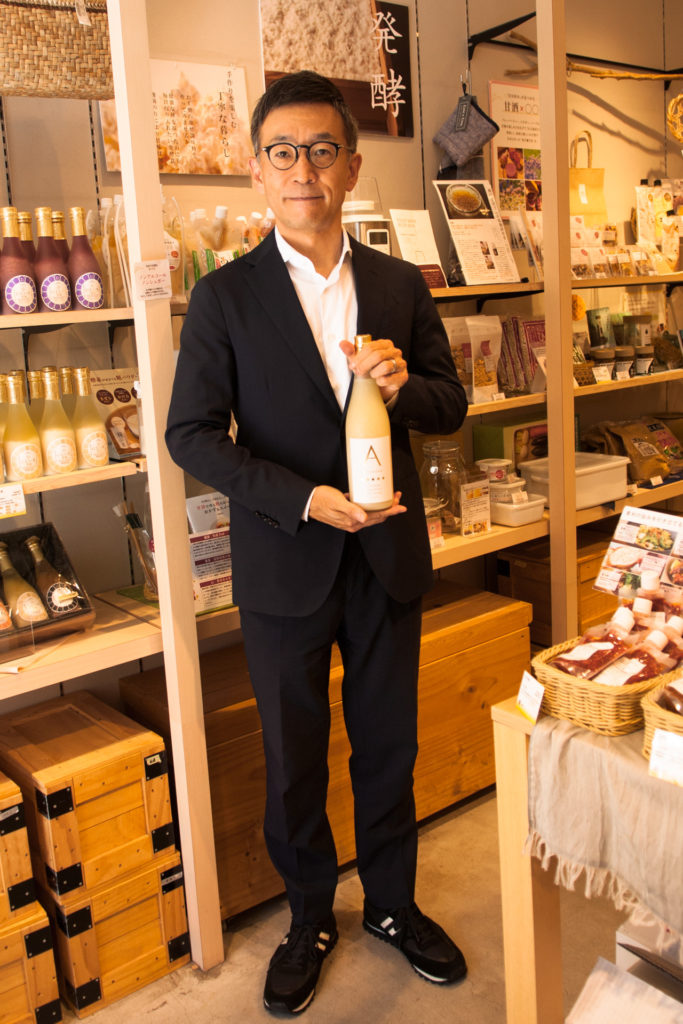
ŌT: Exactly. You could say MURO revolves around kōji. Even the name of the shop is a reference to it.
In the past, houses had small spaces under the roof, akin to attics, called muro (室). Tradesmen who were cultivating kōji by mixing the mold with rice were leaving their cultures in those spaces to help manage the temperature and humidity levels. This has been attested since at least the Muromachi period, and some companies that were established during the Edo period are still active to this day. In the world of kōji products, three or four hundred years old companies are relatively common! Those craftsmen from the Edo period have been passing down the know-how to their descendants to this day, preserving this tradition. So this is the meaning of kōji muro, and the reason why we named our store MURO.
At the beginning, we were working with all kinds of kōji based products, like miso, shōyu, mirin and rice vinegar. However, as we learned more and more about the surprisingly deep world of amazake, we decided to focus exclusively on it.
ŌT: Indeed. Amazake is an extraordinary drink with a lot of health benefits!
When looking at sake, rice vinegar, amazake, miso and shōyu, we can see that they all start with kome kōji (米麹, rice kōji). Depending on how you transform it, you end up with those different products. To make kome kōji, you need a starter, called tane kōji (種麹, seed kōji). There are only a handful of companies in the whole of Japan making those seeds. When the kōji starts to develop, it grows a kind of moss that makes it look similar to moyashi bean sprouts, so those companies are often called moyashiya (モヤシ屋). They continuously research ways to improve the quality and taste of their kōji, as it is the base from which all the end products are made.
In the case of amazake, you only really need to add water to the base. Although kome kōji can be eaten as is, it certainly isn’t tasty. So the most direct way to taste the kōji is amazake. It is the best way to experience the quality of a given batch of kōji. This is also one of the reasons I wanted to focus on amazake: in order to better understand miso, shōyu and such, I need to deepen my understanding of kōji, and amazake is perfect for that.
Moreover, regular consumption of amazake helps deal with issues like chronic constipation by reinforcing the gut microbiota. It also supports the immune system, reducing the risks of illness. We could feel the effects firsthand, as once we started drinking it regularly, we rarely fell ill and our digestion improved. Research in this domain is still ongoing, so there may be other benefits we haven’t yet identified.
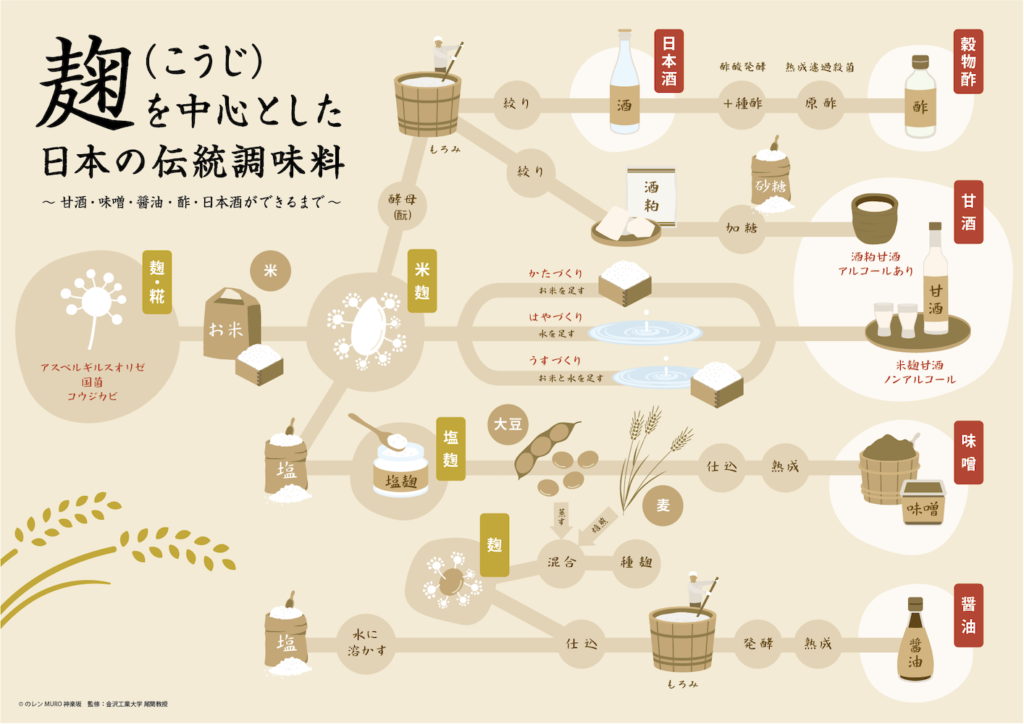
ŌT: Both, really. We do go visit the makers, and also get a lot of offers. There are amazake breweries scattered across the entire country, but the highest concentrations are in areas known for their rice, like Niigata prefecture or the Tōhoku and Kyūshū regions. This makes sense, since to make quality amazake, you need tasty rice and good water coming from the mountains.
We go visit those locations and observe firsthand how their amazake is produced. We make sure all the products we sell meet certain requirements. The amazake has to be tasty and healthy, to stay enjoyable long-term. Fresh, high quality ingredients and pure water must be used.
We also favor breweries putting the emphasis on preserving the environment. Some brewers say they do not do any work, merely create good conditions for the kōji to do its job. It is a labor of passion, they have to keep a constant eye on the mold to make sure it is growing properly, adjusting the culture depending on the weather and conditions. It stands to reason they must preserve the nature providing them with their living.
About Amazake
ŌT: Nowadays, amazake is a drink available all year round. At the end of summer and autumn, when rice is harvested, kōji is grown on shinmai (新米, new rice), which tends to be harder. But the kōji is given more time to properly develop, so it ends up tasting similar no matter the season.
Although there are no variations in taste, amazake consumption can change depending on the time of the year. For instance, it is a traditional drink for oshōgatsu (お正月, New Year festival). Shrines often distribute amazake during this time.
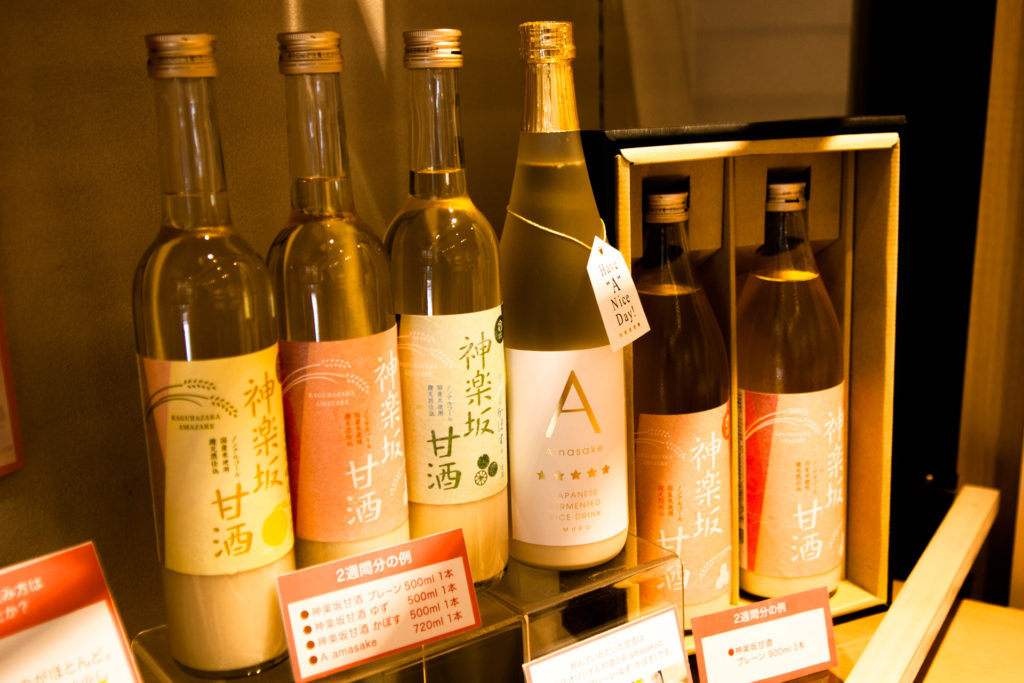
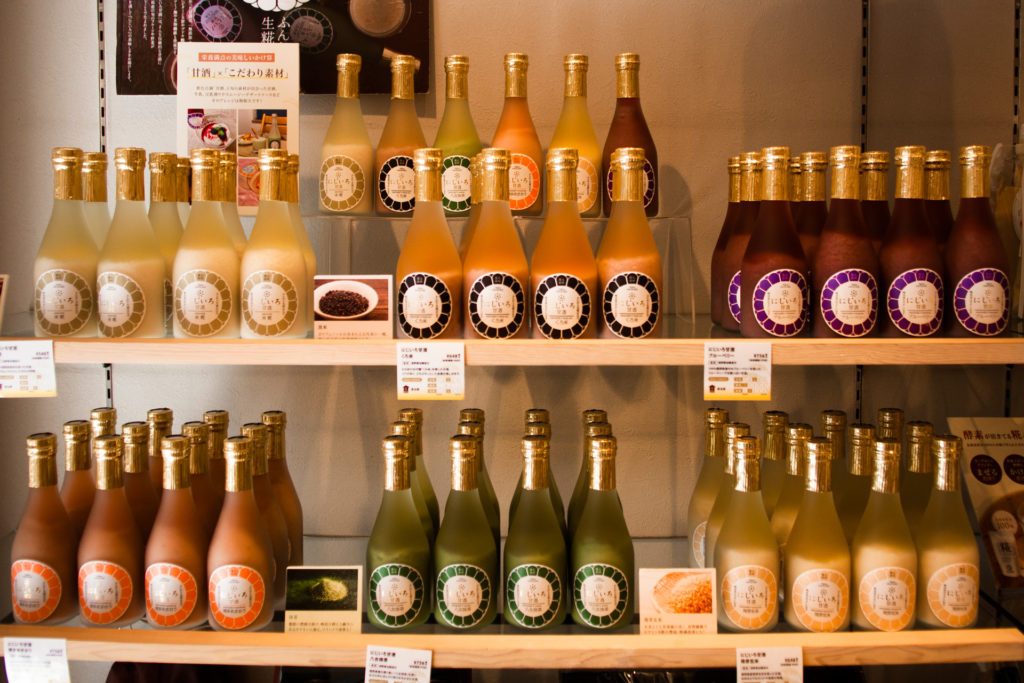
ŌT: If we go even further back in time, in the Nihon Shoki (日本書紀, The Chronicles of Japan, 720), one of the oldest Japanese works, there is a mention of amazake being consumed around the year 289. The Nihon Shoki also describes the founding myths of Japan. The Gods are said to make a divine sake, amanotamuzake (天甜酒), which is thought by some to be a kind of amazake.
During the Heian period, amazake was consumed by nobles during the summer. Going into the Kamakura period, it became more widely available, and by the Edo period it was accessible to most commoners.
Customers at MURO
ŌT: We have a lot of health conscious people in their 30s and 40s, as well as athletes. So mostly people looking after their nutrition and interested in the health benefits of amazake.
GH: Are there also customers buying amazake because they like its taste?
ŌT: Most people coming here for the first time are actually surprised by how good it tastes! Japanese people have this image of amazake not being very palatable, but good quality amazake is really delicious. At one point, we had products from more than a hundred different breweries, but with time only the tastiest ones remained.
When recommending amazake, we typically ask the customer to try first the plain, straight amazake. From there, depending on their taste and needs, we direct them to different brands. For instance, if you like stronger flavors, there are amazake made from genmai (玄米, unpolished rice). Flavors can also be added, such as in yuzu (柚子) or kabosu (カボス) citruses flavored amazake.
In general, people accustomed to amazake tend to like the unflavored brands, where the taste of rice and kōji is strongest. Yuzu or matcha flavored varieties are more popular with people less used to those tastes, like people coming from overseas.
It is also possible to mix amazake with other drinks or foods. For instance, it can be diluted with soya milk, used as a sweetener with tea or poured on yogurt. Since it doesn’t contain additives, it makes for a healthy alternative to more common sweeteners such as corn syrup.
ŌT: Before the COVID situation, the number of foreigners coming to MURO was steadily increasing, especially customers from France and Hong Kong. Amazake is still pretty much unknown outside of Japan, but it would seem more and more people are becoming aware of its existence. Hopefully, at some point in the future we will be able to export it to other countries!
The second project is geared towards athletes. In endurance sports like marathon and trail running, staying hydrated and keeping sugar levels high without impacting performance is always a challenge. We had the idea of making amazake packs, similar to what is being done for sport drinks and jellies. They would be easy to carry and could be used by athletes when on the road or during competitions. Because amazake is “pre-digested”, it is especially easy to absorb and gentle on the digestive system during prolonged efforts, which is an important quality for long distance athletes.
We will be working on both those projects during the winter and are aiming to release them sometime in early 2023.
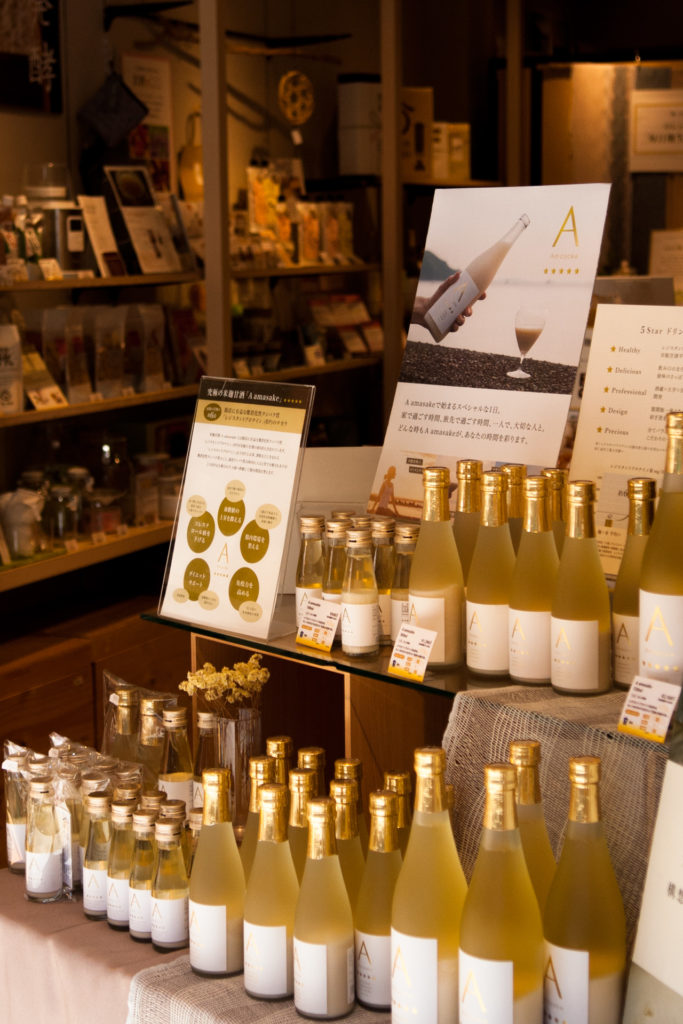
Thank you again for your time and precious explanations. In closing, any message you would like to transmit?
ŌT: While fares have evolved and changed since ancient times, amazake has stood the test of time and remained mostly unchanged throughout history. I do think this is a testament to the depth of this seemingly simple drink, and I hope we will be able to spread it to more people in the future!
1 Chome-12-6 Kagurazaka, Shinjuku City, Tokyo 162-0825
The closest train station is Iidabashi station